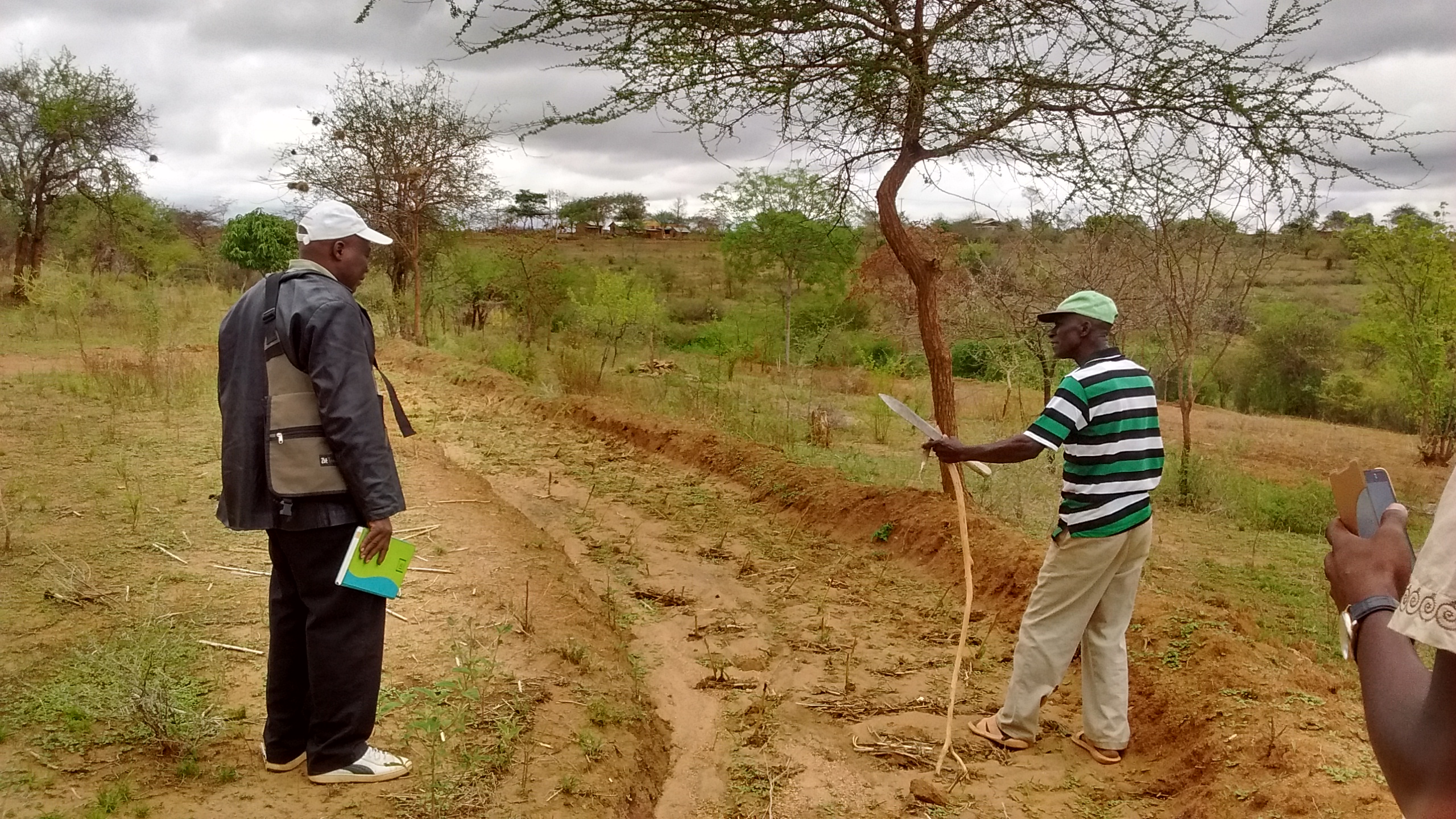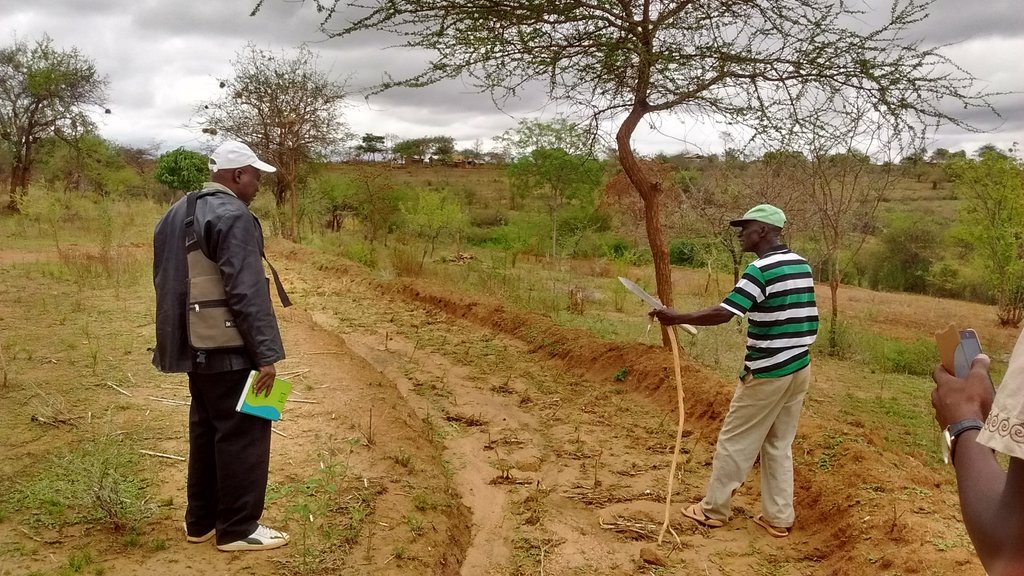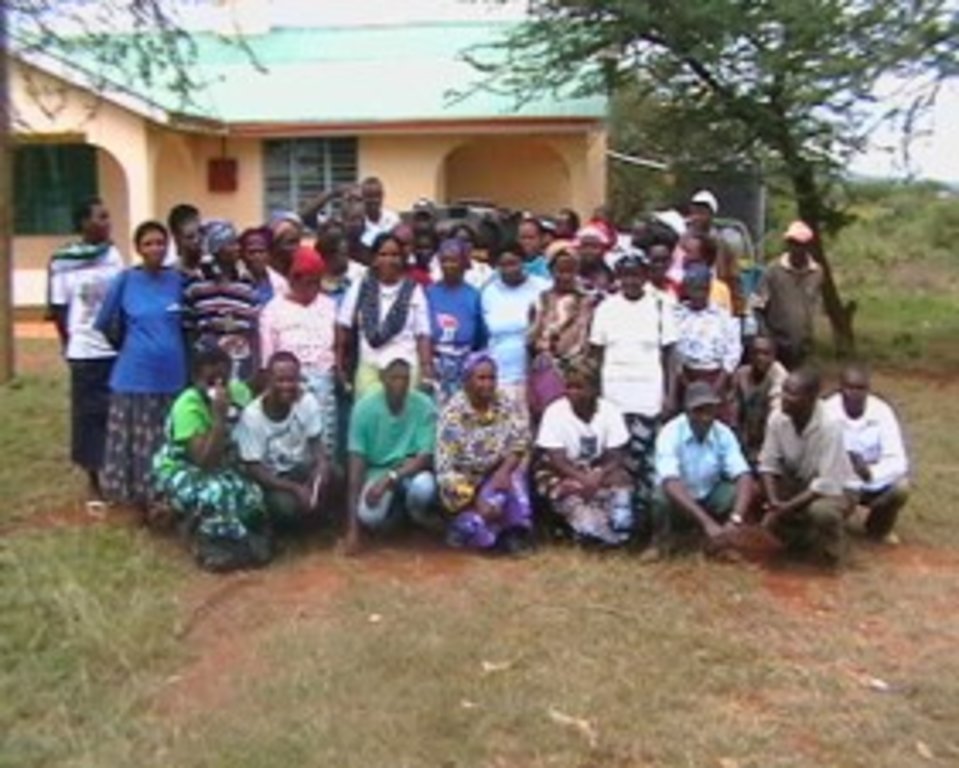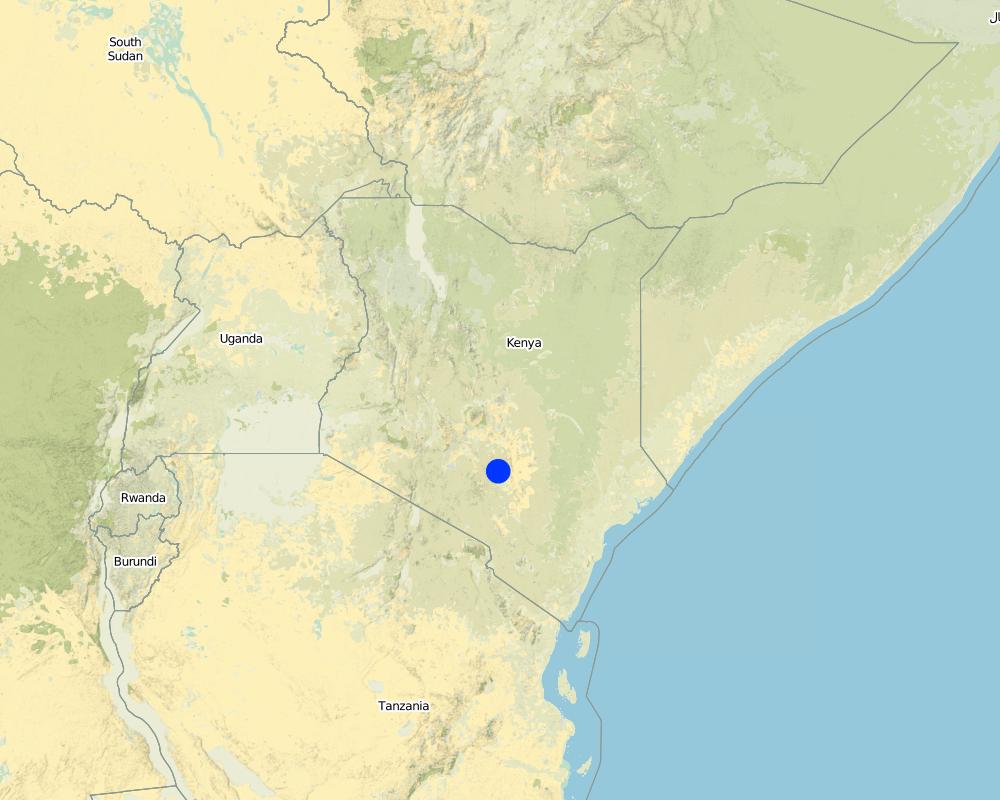In-situ pasture establishment demonstrations [Kenya]
- Création :
- Mise à jour :
- Compilateur : Kevin Mganga
- Rédacteur : –
- Examinateur : Rima Mekdaschi Studer
On-farm demos
approaches_3285 - Kenya
- Résumé complet en PDF
- Résumé complet en PDF pour impression
- Résumé complet dans le navigateur
- Résumé complet (non formaté)
- In-situ pasture establishment demonstrations: 26 janvier 2018 (inactive)
- On-farm pasture establishment demonstrations : 21 février 2018 (inactive)
- On-farm indigenous pasture establishment demonstrations : 20 avril 2018 (inactive)
- On-farm indigenous pasture establishment demonstrations : 3 septembre 2018 (public)
Voir les sections
Développer tout Réduire tout1. Informations générales
1.2 Coordonnées des personnes-ressources et des institutions impliquées dans l'évaluation et la documentation de l'Approche
Personne(s) ressource(s) clé(s)
Spécialiste GDT:
Nom du projet qui a facilité la documentation/ l'évaluation de l'Approche (si pertinent)
Book project: Guidelines to Rangeland Management in Sub-Saharan Africa (Rangeland Management)Nom du ou des institutions qui ont facilité la documentation/ l'évaluation de l'Approche (si pertinent)
Department of Range and Wildlife Sciences, South Eastern Kenya University (SEKU) - Kenya1.3 Conditions relatives à l'utilisation par WOCAT des données documentées
Quand les données ont-elles été compilées (sur le terrain)?
10/11/2017
Le compilateur et la(les) personne(s) ressource(s) acceptent les conditions relatives à l'utilisation par WOCAT des données documentées:
Oui
1.4 Références au(x) questionnaire(s) sur les Technologies de GDT
2. Description de l'Approche de GDT
2.1 Courte description de l'Approche
In-situ pasture establishment demonstration programs and initiatives in the arid and semi-arid environments in Kenya. A more practical approach to enable the end-users appreciate the technology for easier adoption in their individual farms.
2.2 Description détaillée de l'Approche
Description détaillée de l'Approche:
The main characteristic and distinct feature is the interaction of different stakeholders (land users, NGOs, SLM specialists, local government officials and university researchers) in on-farm showcasing of sustainable land management technologies. Sustainable land management specialists, mostly researchers from the university with the help of local government and NGOs field officers demonstrate the entire process of grass reseeding technology from site selection, seedbed preparation, grass species selection, weeding, monitoring and evaluation (both plant and soil parameters). The main method used was on-farm demonstrations both at individual and pastoral and agropastoral groups sites (local land users sites) and a model demonstration site within the university premises (university site). The main stakeholders involved in the process are the SLM specialists, mainly researchers from the university (to share the knowledge, skills and technology), local government (county officials) (link the SLM specialists with the pastoral communities, share their experiences through on-farm demonstrations and explanations of similar technologies), local NGOs (to share the knowledge, past experiences and skills) and pastoral communities (the end users of the technologies, who also shared their indigenous technical knowledge related to natural resource management). The end-users, approximately 40 livestock keepers during the 5 visits and demonstrations, liked the approach because it was more practical (seeing is believing) i.e. on-farm, and can be easily replicated in individual lands under the same local conditions e.g. climate, soil type, grass species, methods of land preparation, land use system. After interacting with the SLM specialists from the universities during the visits and on-farm demonstrations, land-users have adopted the technology to ensure a continuous supply of pasture for their livestock.
2.3 Photos de l'approche
Remarques générales concernant les photos:
Stakeholders discussing and sharing their knowledge and skills
2.5 Pays/ région/ lieux où l'Approche a été appliquée
Pays:
Kenya
Région/ Etat/ Province:
Eastern Province
Autres spécifications du lieu :
Kitui municipality, Kitui county
Map
×2.6 Dates de début et de fin de l'Approche
Si l'année précise est inconnue, indiquez approximativement quand l'Approche a démarré:
il y a moins de 10 ans (récemment)
2.7 Type d'Approche
- initiative/ innovation récente locale
2.8 Principaux objectifs de l'Approche
Demonstrate indigenous pasture establishment in-situ and encourage land users to practice reseeding as a means of 1) rehabilitating their degraded lands, 2) provide forage for their livestock and 3) income generation through sale of surplus animal products(e.g. milk), hay and seeds.
2.9 Conditions favorisant ou entravant la mise en œuvre de la(des) Technologie(s) appliquée(s) sous l'Approche
normes et valeurs sociales/ culturelles/ religieuses
- favorise
Land users are livestock keepers so technologies and approaches to improve livestock production are welcome.
- entrave
Gender based constraints where the male dominate on-farm training/demonstrations compared to female land users
disponibilité/ accès aux ressources et services financiers
- favorise
Facilitation from previous (Agricultural Innovation for Dryland Africa, AIDA) and on-going research project (Rainwater harvesting for Indigenous Pasture Production, ROFIP, in semi-arid Kitui County, Kenya). The current ROFIP project is under the Food and Business Applied Research Fund (ARF) funded by the he Netherlands Organisation for Scientific Research (NWO)
- entrave
Accessing money/financial resources from government/public institutions and organisation is long (much slower) due to e.g. bureaucracy and protocol, compared to private organisation (much faster access, less bureaucratic)
cadre institutionnel
- favorise
University encourages extension service delivery to the local community and supports such initiatives to reach out to land users to share knowledge and expertise.
- entrave
Coordinating different stakeholders both in the private (NGOs) and public sector (university, local government), together with land users is often a challenge mainly due to the different nature of operations e.g. bureaucracy, protocol
collaboration/ coordination des acteurs
- favorise
Collaboration between university, local government and local land users
- entrave
Different stakeholders (e.g. land users, university, local government, NGOs) all have different key objectives to achieve within the general aim/objectives. This often hinders the coordination of actors and implementation of the approach.
cadre juridique (régime foncier, droits d'utilisation des terres et de l'eau)
- favorise
Land used in the approach and for demonstrating the reseeding technology are privately owned.
- entrave
Land is owned as private, communal and group. This determines the organisation and arrangement of the approach.
gouvernance foncière (prise de décisions, mise en œuvre et application des décisions)
- favorise
connaissances sur la GDT, accès aux supports techniques
- favorise
SLM specialists have knowledge about the SLM technologies and various approaches.
marchés (pour acheter les intrants, vendre les produits) et prix
- favorise
- entrave
Some of the inputs e.g. indigenous grass seeds, are not available in the formal seed market in Kenya. Reliance on the informal seed market often leads to the purchase and use of uncertified seeds with poor end results.
charge de travail, disponibilité de la main-d'œuvre
- favorise
Use of local casual labourers. This contributes to owning the project activities and easier implementation in their individual farms.
- entrave
Division of man-hours between the project demonstration sites and individual activities. This may often lead to delays in implementing project activities.
3. Participation et rôles des parties prenantes impliquées dans l'Approche
3.1 Parties prenantes impliquées dans l'Approche et rôles
- exploitants locaux des terres / communautés locales
local land users and livestock keepers
Share their indigenous technical knowledge; provide land for on-farm demonstrations
- Spécialistes de la GDT/ conseillers agricoles
university researchers
Describe the technologies using practical on-farm demonstrations. Additionally, share and present scientific research findings to demonstrate the contribution of the use of the technology for increased indigenous pasture production i.e. evidence based
- enseignants/ élèves/ étudiants
university students
Practical demonstrations
- ONG
Local NGO (Roads for Water)
Collaborate with university researchers to demonstrate to different land users and managers (e.g. researchers, pastoral and agropastoral communities) how other land management strategies e.g. rainwater harvesting using roads as a catchment can be incorporated in reseeding programs to enhance pasture establishment especially in dryland environments.
- gouvernement local
Extension agents and advisors in the county government
Link to the end-users, share past experiences and knowledge on SLM approaches
3.2 Participation des exploitants locaux des terres/ communautés locales aux différentes phases de l'Approche
| Participation des exploitants locaux des terres/ communautés locales | Spécifiez qui était impliqué et décrivez les activités | |
|---|---|---|
| initiation/ motivation | interactive | Local land users involved in the site selection and involved in the plans of the project. Local land users share their indigenous technical knowledge (ITK) gained through man years of experience on aspects such as; which species are preferred by free grazing animals (i.e. ranking different species); which grass species perform better under different rainfall regimes, topography and soil types; which grass species are best suited for soil conservation and soil erosion control. |
| planification | interactive | Local land users actively involved in deciding on scheduled land users visits and demonstrations. Local land users participate and contribute to the planning of e.g. sowing dates, methods of land preparation, grass species selection in relation to their individual taste and preference and intended use (fodder for livestock, soil conservation and combating degradation, large scale seed production). |
| mise en œuvre | interactive | Demonstration conducted on individual 'farms'/ pastures and local land users implement the technologies as 'model land users'. |
| suivi/ évaluation | interactive | Constant communication from through short message services (SMS) and telephone calls on progress and challenges as land users monitor changes e.g. seed germination, seedling establishment. Local land users report this to the SLM specialists e.g. researchers in the university and post-graduate students involved in the projects. |
| Research | passive | Research is mainly conducted by SLM specialists at university and students. Local government are also involved in doing research since some of the students recruited to be part of the project e.g PhD and MSc students are permanently employed by the local government. Local land users share their indigenous technical knowledge (ITK) through one-on-one informal discussions/sessions between them and the SLM specialists and students. |
3.3 Diagramme/ organigramme (si disponible)
Description:
Interaction between different stakeholders (SLM specialists, local government, local NGOs and land users) for in-situ pasture establishment demonstrations in arid and semi-arid environments in Kenya
Auteur:
Kevin Z. Mganga
3.4 Prises de décision pour la sélection de la Technologie/ des Technologies
Indiquez qui a décidé de la sélection de la Technologie/ des Technologies à mettre en œuvre:
- tous les acteurs concernés dans le cadre d'une approche participative
Spécifiez sur quelle base ont été prises les décisions:
- l'évaluation de connaissances bien documentées en matière de GDT (prises de décision fondées sur des preuves tangibles)?
- les résultats de recherches?
- expériences et opinions personnelles (non documentées)
4. Soutien technique, renforcement des capacités et gestion des connaissances
4.1 Renforcement des capacités/ formation
Une formation a-t-elle été dispensée aux exploitants des terres/ autres parties prenantes?
Oui
Spécifiez qui a été formé:
- exploitants des terres
- personnels/ conseillers de terrain
Si pertinent, spécifiez le genre, l'âge, le statut, l'ethnie, etc.
The land users and field staff/advisers were drawn from both genders (male and female). University undergraduate students (both male and female students, between the ages of 20-24 years) were also involved in the training during on-farm practical sessions.
Formats de la formation:
- zones de démonstration
Thèmes abordés:
site selection, seedbed preparation, choice of grass species, monitoring and evaluation (plant and soil attributes), maintenance and further management
4.2 Service de conseils
Les exploitants des terres ont-ils accès à un service de conseils?
Oui
Spécifiez si le service de conseils est fourni:
- dans les champs des exploitants?
Décrivez/ commentez:
Advisory services on-farm during visits
4.3 Renforcement des institutions (développement organisationnel)
Des institutions ont elles été mises en place ou renforcées par le biais de l'Approche?
- oui, modérément
Spécifiez à quel(s) niveau(x), ces institutions ont été renforcées ou mises en place:
- local
- régional
- national
Décrivez l'institution, ses rôles et responsabilités, ses membres, etc.
University (South Eastern Kenya University, SEKU) - extension and outreach and research and academic exchange programs with other research institutions e.g. Kenya Agricultural and Livestock Research Organization (KALRO), International Crops Research Institute for the Semi-Arid Tropics (ICRISAT), Kenya Seed Company, and other universities e.g. University of Nairobi (UoN)
Précisez le type de soutien:
- financier
- renforcement des capacités/ formation
Donnez plus de détails:
Financial support from within university research funds and the National Research Fund (NRF), Kenya, through the Ministry of Education, Science and Technology. Capacity building through postgraduate training involving researchers from SEKU, KALRO, ICRISAT and UoN
4.4 Suivi et évaluation
Le suivi et l'évaluation font ils partie de l'Approche? :
Oui
Commentaires:
Adoption and uptake of the technologies among land users
Si oui, ce document est-il destiné à être utilisé pour le suivi et l'évaluation?
Oui
Commentaires:
The approach demonstrates sustainable land management technologies e.g. grass reseeding, on farm. This is aimed at increasing adoption and spread of the technology by other land users.
4.5 Recherche
La recherche a-t-elle fait partie intégrante de l’Approche?
Oui
Spécifiez les thèmes:
- écologie
- technologie
Donnez plus de détails et indiquez qui a mené ces recherches:
Part of a SLM specialist i.e. researcher at the university, research project
5. Financement et soutien matériel externe
5.1 Budget annuel de la composante GDT de l'Approche
Si le budget annuel précis n'est pas connu, indiquez une fourchette:
- 2 000-10 000
Commentez (par ex. principales sources de financement/ principaux bailleurs de fonds):
Food and Business Applied Research Fund (ARF) funded by the The Netherlands Organisation for Scientific Research (NWO), Netherlands
5.2 Soutiens financiers/ matériels fournis aux exploitants des terres
Les exploitants des terres ont-ils reçu un soutien financier/ matériel pour la mise en œuvre de la Technologie/ des Technologies?
Oui
Si oui, spécifiez le(s) type(s) de soutien, les conditions et les fournisseurs:
Land and seed bed preparation: hiring of casual labour and rent of machinery/equipment (ox-plough/tractor)
5.3 Subventions pour des intrants spécifiques (incluant la main d'œuvre)
- main d'œuvre
| Dans quelle mesure | Spécifiez les subventions |
|---|---|
| en partie financé | In cash subsidy mainly for land/site preparation e.g. creating of micro-catchments using ox-driven ploughs, digging trenches as structures for rainwater harvesting. |
- équipement
| Spécifiez les intrants subventionnés | Dans quelle mesure | Spécifiez les subventions |
|---|---|---|
| machines | entièrement financé | Ox-driven ploughs for site preparation. Occasionally tractors |
| outils | entièrement financé | Hand held hoes for bush clearing and site preparation |
- intrants agricoles
| Spécifiez les intrants subventionnés | Dans quelle mesure | Spécifiez les subventions |
|---|---|---|
| semences | entièrement financé | Indigenous grass seeds used in the technology and approach are provided for by the project. However, seed for subsequent sowing is expected to be harvested from the established pasture sites |
Si la main d'œuvre fournie par les exploitants des terres était un intrant substantiel, elle était:
- volontaire
Commentaires:
This is mainly for maintaining, monitoring and evaluation of the on-farm sites e.g. aspects of maintaining the fence to keep of free-ranging livestock from damaging the established pastures and assisting other hired labourers e.g. in seeding.
5.4 Crédits
Des crédits ont-ils été alloués à travers l'Approche pour les activités de GDT?
Non
5.5 Autres incitations ou instruments
D'autres incitations ou instruments ont-ils été utilisés pour promouvoir la mise en œuvre des Technologies de GDT?
Non
6. Analyses d'impact et conclusions
6.1 Impacts de l'Approche
Est-ce que l'Approche a autonomisé les exploitants locaux des terres, amélioré la participation des parties prenantes?
- Non
- Oui, un peu
- Oui, modérément
- Oui, beaucoup
They owned and embraced the initiative since it involved them from the onset
Est-ce que l'Approche a permis la prise de décisions fondées sur des données probantes?
- Non
- Oui, un peu
- Oui, modérément
- Oui, beaucoup
On-farm sites are used for both demonstrations and experimental plots for research. This is mainly conducted by SLM specialists from the university and postgraduate students in close collaboration with land users (e.g. farmers) aimed at comparing different treatments for the technologies.
Est-ce que l'Approche a aidé les exploitants des terres à mettre en œuvre et entretenir les Technologies de GDT?
- Non
- Oui, un peu
- Oui, modérément
- Oui, beaucoup
Practical on-farm demonstrations in their individual farms
Est-ce que l'Approche a amélioré la coordination et la mise en œuvre de la GDT selon un bon rapport coût-efficacité?
- Non
- Oui, un peu
- Oui, modérément
- Oui, beaucoup
Communication through SMS and phone calls, exchange of photos/videos of demonstrations through WhatsApp groups and emails
Est-ce que l'Approche a mobilisé/ amélioré l'accès aux ressources financières pour la mise en œuvre de la GDT?
- Non
- Oui, un peu
- Oui, modérément
- Oui, beaucoup
Joint research grants and funds through collaborative work among stakeholders mostly between local NGOs and universities
Est-ce que l'Approche a amélioré les connaissances et les capacités des exploitants des terres pour mettre en œuvre la GDT?
- Non
- Oui, un peu
- Oui, modérément
- Oui, beaucoup
Through practical and hands-on on-farm demonstrations by SLM specialists
Est-ce que l'Approche a amélioré les connaissances et les capacités des autres parties prenantes?
- Non
- Oui, un peu
- Oui, modérément
- Oui, beaucoup
Local government and NGOs appreciating the technologies and serve as ambassadors of the same
Est-ce que l'Approche a construit/ renforcé les institutions, la collaboration entre parties prenantes?
- Non
- Oui, un peu
- Oui, modérément
- Oui, beaucoup
Collaboration between universities, local government, local NGOs and land users strenghtened
Est-ce que l'Approche a atténué les conflits?
- Non
- Oui, un peu
- Oui, modérément
- Oui, beaucoup
Est-ce que l'Approche a autonomisé les groupes socialement et économiquement défavorisés?
- Non
- Oui, un peu
- Oui, modérément
- Oui, beaucoup
Est-ce que l'Approche a amélioré l'égalité entre hommes et femmes et autonomisé les femmes et les filles?
- Non
- Oui, un peu
- Oui, modérément
- Oui, beaucoup
Female land users involved
Est-ce que l'Approche a encouragé les jeunes/ la prochaine génération d'exploitants des terres à s'engager dans la GDT?
- Non
- Oui, un peu
- Oui, modérément
- Oui, beaucoup
Young farmers involved. Also students in universities as part of practicals.
Est-ce que l'Approche a conduit à améliorer la sécurité alimentaire et/ou la nutrition?
- Non
- Oui, un peu
- Oui, modérément
- Oui, beaucoup
Improved pasture production for livestock, healthy animals
Est-ce que l'Approche a amélioré l'accès aux marchés?
- Non
- Oui, un peu
- Oui, modérément
- Oui, beaucoup
Market for sale of grass seeds
Est-ce que l'Approche a amélioré la capacité des exploitants des terres à s'adapter aux changements/ extrêmes climatiques et a atténué les catastrophes liées au climat?
- Non
- Oui, un peu
- Oui, modérément
- Oui, beaucoup
Combining the use of indigenous drought tolerant grass species and water harvesting
Est-ce que l'Approche a conduit à des emplois, des opportunités de revenus?
- Non
- Oui, un peu
- Oui, modérément
- Oui, beaucoup
Through sale of grass seeds and hay, surplus animal products (mostly milk) in seasons of plenty.
6.2 Principale motivation des exploitants des terres pour mettre en œuvre la GDT
- augmenter la production
Increased pasture yields (improved livestock production)
- augmenter la rentabilité/ bénéfice, rapport coûts-bénéfices
Sale of grass seeds and hay and surplus animal products e.g. milk and healthy animals at a good market price
- réduire la dégradation des terres
Established pastureland reduces soil erosion and contributes to enhanced soil moisture and C-sequestration (soil ecosystem services).
- conscience environnementale
Environmental conservation
6.3 Durabilité des activités de l'Approche
Les exploitants des terres peuvent-ils poursuivre ce qui a été mis en œuvre par le biais de l'Approche (sans soutien extérieur)?
- oui
Si oui, décrivez de quelle manière:
Approach is practical and involves the use of already existing knowledge and skills e.g. use of ox-plough for site preparation (creating micro-catchments) is not foreign; local land users have interacted with the indigenous grasses
6.4 Points forts/ avantages de l'Approche
| Points forts/ avantages/ possibilités du point de vue de l'exploitant des terres |
|---|
| Ease to understand and appreciate because of its practical nature |
| Approach allows a close interaction and exchange between the different stakeholders (land users, NGOs, local government officials, SLM specialists, universities) i.e. provides a link between science-practice link, learning by doing. |
| Points forts/ avantages/ possibilités du point de vue du compilateur ou d'une autre personne ressource clé |
|---|
| On-farm and practical approach for easy adoption by other land users |
| Takes advantage of group dynamics where different stakeholders share and provide immediate feedback and seek clarification throughout the process thus enriching the discussions |
6.5 Faiblesses/ inconvénients de l'Approche et moyens de les surmonter
| Faiblesses/ inconvénients/ risques du point de vue de l’exploitant des terres | Comment peuvent-ils être surmontés? |
|---|---|
| Source of conflict between land user where the on-farm demonstration has been conducted and other neighboring land users e.g. diverting run-off in the upland thus reducing the volume of rainwater reaching farms located down-slope. | Continuous capacity building, knowledge sharing and sensitization |
| Choice of on-farm demonstration site at an individual land owner can lead to aggravation among other land users | Use of communal or group owned land for on-farm demonstrations |
| Allocation of time to attend the on-farm demonstrations. The approach is often conducted before the onset of the rains, when the land-users are busy preparing their own farms for sowing. This might lead to low turn-outs during demonstrations. | In consultation with the land users, set the date(s) when majority of the land users are available. |
| Faiblesses/ inconvénients/ risques du point de vue du compilateur ou d'une autre personne ressource clé | Comment peuvent-ils être surmontés? |
|---|---|
| Language barrier (SLM specialists and land users) | Involving a local land user/personnel to bridge the gap |
7. Références et liens
7.1 Méthodes/ sources d'information
- visites de terrain, enquêtes sur le terrain
20
- interviews/entretiens avec les exploitants des terres
50
7.2 Références des publications disponibles
Titre, auteur, année, ISBN:
KZ Mganga, NKR Musimba, DM Nyariki. 2015. Competition indices of three perennial grasses used to rehabilitate degraded semi-arid rangelands in Kenya. The Rangelands Journal 37: 489-495
Disponible à partir d'où? Coût?
The Rangeland Journal, USD 25
Titre, auteur, année, ISBN:
KZ Mganga, NKR Musimba, DM Nyariki. 2015. Combining sustainable land management technologies to combat land degradation and improve rural livelihoods in semi-arid lands in Kenya. Environmental Management 56: 1538-1548
Disponible à partir d'où? Coût?
Environmental Management, USD 38
Titre, auteur, année, ISBN:
KZ Mganga, NKR Musimba, MM Nyangito, DM Nyariki, AW Mwang’ombe. 2015. The choice of grass species to combat desertification in semi-arid Kenyan rangelands is greatly influenced by their forage value for livestock. Grass and Forage Science 70: 161-167.
Disponible à partir d'où? Coût?
Grass and Forage Science, USD 38
7.3 Liens vers les informations pertinentes disponibles en ligne
Titre/ description:
Competition indices of three perennial grasses used to rehabilitate degraded semi-arid rangelands in Kenya
URL:
http://www.publish.csiro.au/rj/RJ15023
Titre/ description:
Combining sustainable land management technologies to combat land degradation and improve rural livelihoods in semi-arid lands in Kenya
URL:
https://link.springer.com/article/10.1007/s00267-015-0579-9
Titre/ description:
The choice of grass species to combat desertication in semi-arid Kenyan rangelands is greatly inuenced by their forage value for livestock
URL:
http://onlinelibrary.wiley.com/doi/10.1111/gfs.12089/abstract
Liens et modules
Développer tout Réduire toutLiens
Aucun lien
Modules
Aucun module trouvé






